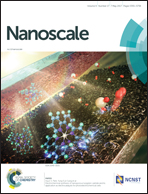A general strategy for the in situ decoration of porous Mn–Co bi-metal oxides on metal mesh/foam for high performance de-NOx monolith catalysts†
Abstract
Owing to their advantages of strong mechanical stability, plasticity, thermal conductivity and mass transfer ability, metal foam or meshes are considered promising monolith supports for de-NOx application. In this work, we developed a facile method for the decoration of porous Mn–Co bi-metal oxides on Fe meshes. The block-like structure was derived from in situ coating, and simultaneous nucleation and growth of the Mn–Co hydroxide precursor, while the porous Mn–Co oxides were formed via the calcination process. Moreover, the decoration of the high-purity Co2MnO4 spinel could lead to enhanced reducibility and adsorption behaviors, which are crucial to the catalytic process. Of note is the fact that the Fe mesh used in the synthesis procedure could be substituted by various metal supports including Ti mesh, Cu foam and Ni foam. Driven by the above motivations, metal supports decorated with Mn–Co oxides were evaluated as monolith de-NOx catalysts for the first time. Inspiringly, these catalysts demonstrate outstanding low-temperature catalytic activity, desirable stability and excellent H2O resistance. This work might open up a new path for the design and development of high performance de-NOx monolith catalysts.



 Please wait while we load your content...
Please wait while we load your content...